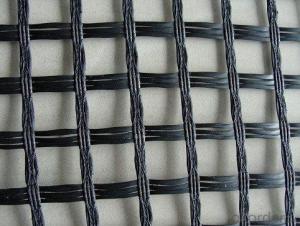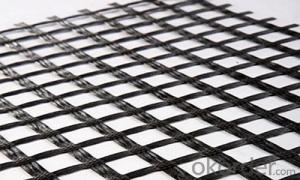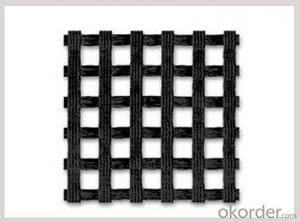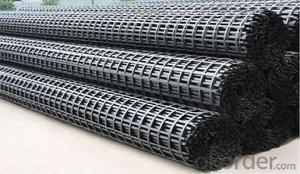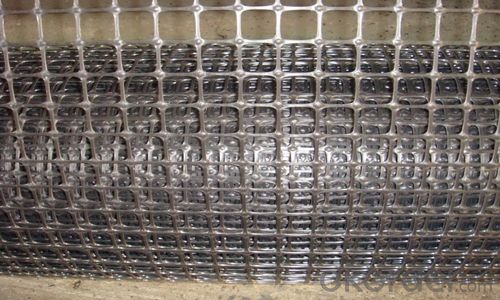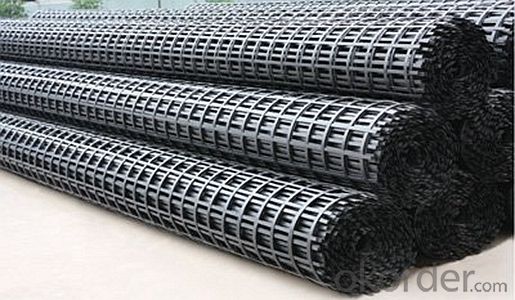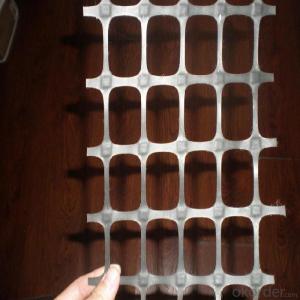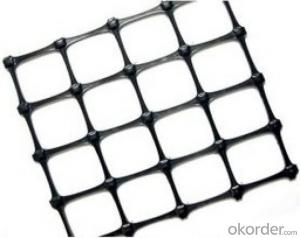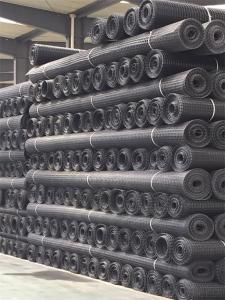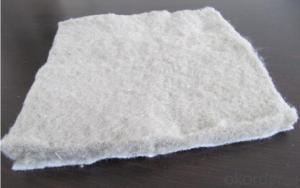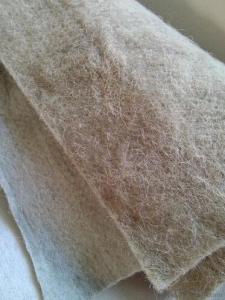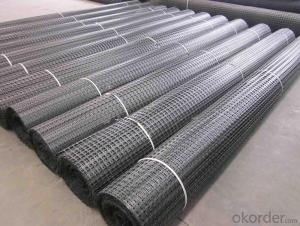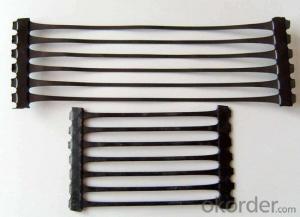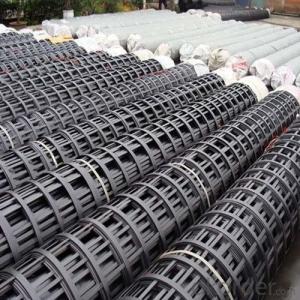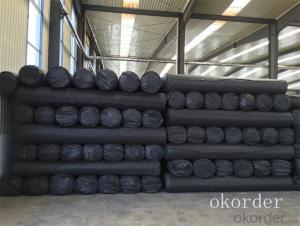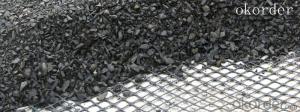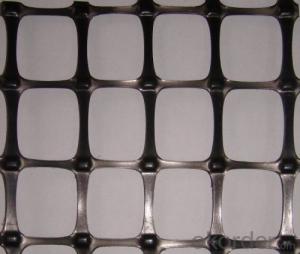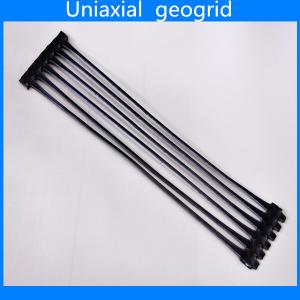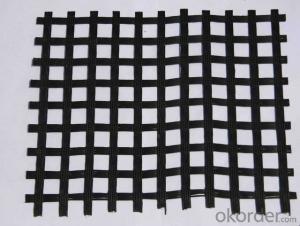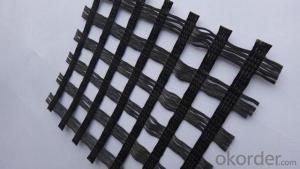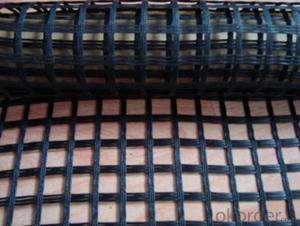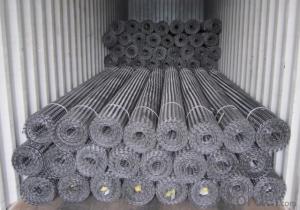High Density Biaxial Geogrids of Civil Engineering Products
- Loading Port:
- China main port
- Payment Terms:
- TT OR LC
- Min Order Qty:
- 1000 m²
- Supply Capability:
- 10000000 m²/month
OKorder Service Pledge
OKorder Financial Service
You Might Also Like

Product Introduction
Type:
Geogrids
Place of Origin:
Jiangsu, China (Mainland)
Brand Name:
Lonrace
Model Number:
geogrid
Material:
Polyester
We have three types of Geogrids; extruded, woven and bonded.
Extruded Geogrids are flat structures in polymer (usually high density polyethylene or polypropylene) that are extruded and then pulled: this may be done in one direction (mono-oriented geogrids), or in the two main directions (bi-oriented geogrids). They are used in soil and road paving reinforcement. Slopes and subgrades with rails are a serious problem in railroad construction. Under high pressure the layers slide and deform consequently causing rail deformation, which requires closing railroad segments for a long time. Geogrid application allows carrying out comlex repair operations of the necessary road segment in shortest time (which is very essential in transportation).
Our Service
Quality assurance
1.On a regular basis or as per your request,we entrust national testing agencies to conduct quality inspections
2. Strictly in accordance with the ISO9001-2008 international quality system standard,we monitor and manage the whole process throughout production,quality testing,and measurement to ensure product quality
3. For quality-related construction delay or substandard construction(except for damage or losses due to customer’s responsibility or irresistible natural disasters),we have refunding,replacement,and repair services.We will respond to customers’ feedbacks on quality issues within 24 hours.
Packaging & Shipping
Packing: PLASTIC FILM INSIDE, AND WOVEN BAG OUTSIDE
Shipping: About 15 days after receipt the deposit
FAQ:
Q: What kind of payments does jenor support?
A: T/T, L/C, Cash are accepted.
Q: Do you charge for the samples?
A: Accordeing to our company policy, the samples are free, we only charge the freight fee. And we will return the freight fee during the next order.
Q: Can you produce according to customers' design?
A: Sure, we are professional manufacturer, OEM and ODM are both welcome.
Q: Do you have other products?
A: Yes, please check the pictures:
- Q: What are the differences between geogrids and geocomposites?
- Geogrids and geocomposites are both used in soil stabilization and reinforcement applications, but they have some key differences. Geogrids are typically made from high-strength polymers or fiberglass, and they have a grid-like structure with open spaces. They are designed to provide tensile strength and distribute loads across a wider area. Geogrids are mainly used for reinforcing soils, retaining walls, and roadways. On the other hand, geocomposites are multi-layered materials that combine different geosynthetic components. They usually consist of a geotextile fabric or membrane bonded to a geogrid or geonet layer. Geocomposites offer a combination of functions such as filtration, drainage, separation, and reinforcement. They are commonly used in applications like erosion control, landfill engineering, and drainage systems. In summary, while geogrids focus on reinforcement and load distribution, geocomposites offer a more versatile solution by combining multiple functions in a single product.
- Q: How do geogrids improve the bearing capacity of foundations?
- Geogrids improve the bearing capacity of foundations by providing reinforcement and stability to the soil. They act as a strong tensile element, distributing the load more evenly and reducing settlement. This helps to prevent soil movement and failure, ultimately increasing the overall strength and stability of the foundation.
- Q: What are the different materials used to manufacture geogrids?
- Geogrids are typically manufactured using a variety of materials such as polyester, polypropylene, high-density polyethylene (HDPE), and fiberglass. These materials are chosen for their strength, durability, and resistance to environmental factors such as chemical exposure and UV radiation. Each material has its own unique properties, making it suitable for specific applications in geotechnical engineering and soil stabilization projects.
- Q: How do geogrids improve the performance of geosynthetic-reinforced foundations?
- Geogrids improve the performance of geosynthetic-reinforced foundations by providing increased tensile strength and stability to the soil. They act as a reinforcement layer, distributing loads more evenly and reducing the potential for soil settlement or failure. Additionally, geogrids enhance the overall bearing capacity of the foundation, ensuring better long-term performance and reducing the risk of structural damage.
- Q: What is the recommended geogrid junction strength?
- The recommended geogrid junction strength varies depending on the specific project requirements and site conditions. It is best to consult with a geotechnical engineer or follow the manufacturer's guidelines to determine the appropriate geogrid junction strength for each particular application.
- Q: Plastic two-way geogrid hole 4 cm thick, 1 mm wire width of 4 mm
- So I can give you a good price
- Q: How do geogrids enhance the performance of geocell confinement systems?
- Geogrids enhance the performance of geocell confinement systems by providing additional strength, stability, and load distribution. They reinforce the geocell walls, preventing lateral spreading and improving the overall structural integrity. Geogrids also enhance the load-bearing capacity of the geocell by evenly distributing the applied loads, reducing localized stresses, and preventing deformation or failure. Additionally, geogrids increase the overall stiffness of the geocell system, allowing for better confinement and improved performance in various applications such as slope stabilization, erosion control, and pavement reinforcement.
- Q: Can geogrids be used in reinforcement of gabion structures?
- Yes, geogrids can be used in the reinforcement of gabion structures. Geogrids are commonly used to provide stability and enhance the strength of gabion walls by improving load distribution and reducing soil movement. They are typically installed horizontally within the gabion structure to increase its overall stability and prevent deformation.
- Q: Do geogrids affect groundwater flow?
- No, geogrids do not affect groundwater flow.
- Q: How do geogrids help in reducing the environmental impact of construction?
- Geogrids help in reducing the environmental impact of construction by providing stabilization and reinforcement to the soil, leading to a reduction in the amount of excavation and land disturbance required. This helps to minimize the need for additional resources and materials, as well as the overall carbon footprint of the construction project. Additionally, geogrids can enhance the longevity of structures, reducing the need for frequent repairs or replacements, further minimizing the environmental impact.
Send your message to us
High Density Biaxial Geogrids of Civil Engineering Products
- Loading Port:
- China main port
- Payment Terms:
- TT OR LC
- Min Order Qty:
- 1000 m²
- Supply Capability:
- 10000000 m²/month
OKorder Service Pledge
OKorder Financial Service
Similar products
Hot products
Hot Searches
Related keywords
